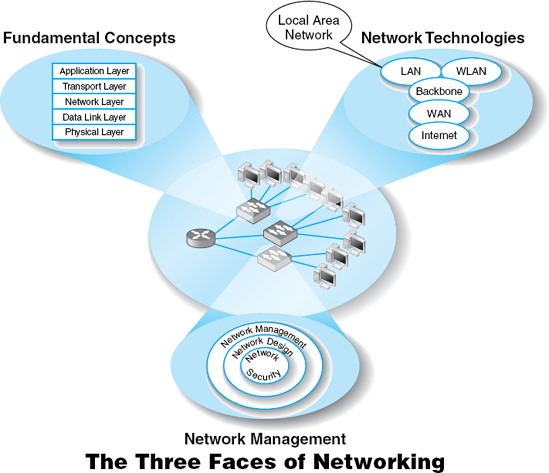Chapter 6. LOCAL AREA NETWORKS

THE PRECEDING chapters provided a fundamental understanding of the five basic layers in a typical network. This chapter draws together these concepts to describe a basic LAN. We first summarize the major components of a LAN and then describe the two most commonly used LAN technologies: traditional Ethernet and switched Ethernet. The chapter ends with a discussion of how to design LANs and how to improve LAN performance. In this chapter, we focus only on the basics of LANs; the next chapter describes how LANs and BNs are used together.
OBJECTIVES ▾
Be aware of the roles of LANs in organizations
Understand the major components of LANs
Understand traditional Ethernet LANs
Understand switched Ethernet LANs
Understand the best practice recommendations for LAN design
Be familiar with how to improve LAN performance
CHAPTER OUTLINE ▾
INTRODUCTION
Why Use a LAN?
Dedicated-Server versus Peer-to-Peer LANs
LAN COMPONENTS
Network Interface Cards
Network Cables
Network Hubs and Switches
Network Operating Systems
TRADITIONAL ETHERNET (IEEE 802.3)
Topology
Media Access Control
Types of Ethernet
SWITCHED ETHERNET
Topology
Media Access Control
Performance Benefits
THE BEST PRACTICE LAN DESIGN
IMPROVING LAN PERFORMANCE
Improving Server Performance
Improving Circuit Capacity
Reducing Network Demand
IMPLICATIONS FOR MANAGEMENT
SUMMARY
INTRODUCTION
Most large organizations have numerous LANs connected by ...
Get Business Data Communications and Networking now with the O’Reilly learning platform.
O’Reilly members experience books, live events, courses curated by job role, and more from O’Reilly and nearly 200 top publishers.

